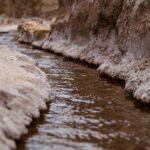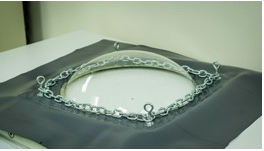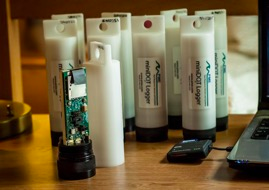
Hyporheic research with buried miniDOT Loggers
March 7, 2017
Understanding Wildlife Inputs in the Mara River
June 6, 2017Tracking Benthic Production with miniDOT®
Project Details
- PRODUCT(S): miniDOT® Logger
- APPLICATION: Surface Water
- PARAMETER: Dissolved Oxygen, Temperature
- LOCATION: Michigan and Wisconsin, U.S.
- ORGANIZATION: McGill University
- RECOGNITION: Sean Godwin

Case Study Description
To measure dissolved oxygen being produced by benthic organisms, miniDOT loggers were placed at varying depths. A study of lakes in the northern U.S. used a multitude of miniDOT loggers to study how particles in the lake water column inhibited photosynthesis.

Research at McGill University led by Sean Godwin set out to examine the factors that affect the photosynthetic production of organisms living on lake beds, in what’s called the benthic zone. The team specifically looked at periphyton, a mixture or community of organisms that includes algae, cyanobacteria and other microbes living in this zone.
The study was published in Limnology and Oceanography, a journal of the Association for the Sciences of Limnology and Oceanography (ASLO).
Dissolved organic carbon key inhibitor of photosynthesis

The team studied 11 lakes at the University of Notre Dame Environmental Research Center along the Michigan-Wisconsin border, and measured four factors that might affect periphyton production:
- Dissolved organic carbon (DOC)
- Algae biomass (Chlorophyll A)
- Water depth ratio
- Total phosphorus (TP)
A multitude of miniDOTs were deployed in home-made acrylic dome chambers at various depths at the research sites. Dissolved oxygen and temperature change over time were used to effectively estimate the level of production of the organisms below.
The study found that dissolved organic carbon (DOC), tiny particles leached out of humic plant and animal matter, was by far the most significant driver of periphyton primary production. DOC alone accounted for 86% of production variability, with depth ratio and phosphorus (TP) having lesser effects. The relatively low influence of TP was a finding that ran contrary to other studies, but may reflect the characteristics of such pristine northern lakes.
miniDOT logger a “cost-effective solution”

Study lead Sean Godwin said the miniDOT logger’s specific functionality and low cost made it perfectly suited for the study.
“Compared to other products on the market, miniDOTs were relatively inexpensive because they didn’t include extra sensors that we didn’t need,” Godwin said. “As a result, the miniDOTs provided us a cost-effective solution for sampling many locations at the same time, which is often critical for ecological studies.”
The portability of the miniDOT Logger was also noted by the researchers. This made it easier to adapt the instruments to be fitted into the specialized measuring chambers.
“We also appreciated that the miniDOTs were compact and robust, as we were able to deploy the loggers in smaller spaces and we never had to worry about difficult transportation,” Godwin said.

